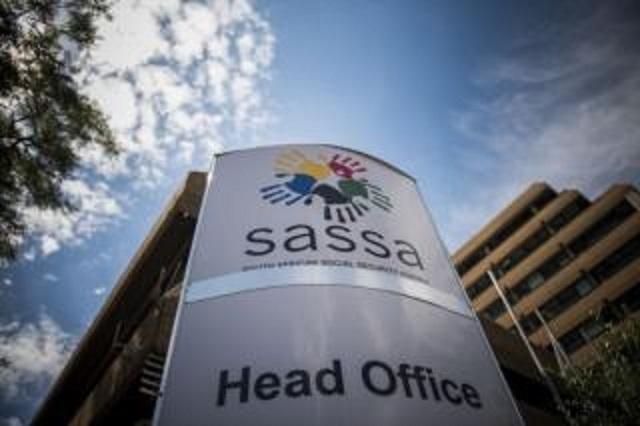- According to Research by the University of Johannesburg (UJ) which revealed that in 2022, more than 20 million people were recipients of the SRD grant.
- In total, more than 28 million people received social grants throughout last year.
- Before the pandemic, 18 million (31%) South Africans depended on social grants for their basic needs, and now (since the introduction of the SRD grant), 47% of the country’s population are reliant on grants.
The social Relief of Distress grant implemented by the government and distributed monthly by SASSA is a necessity for millions of South Africans, especially after the pandemic. Research conducted by the University of Johannesburg has revealed just how many people in the country are reliant on the grant for survival.

The Social Relief of Distress (SRD) grant, also known as the R350 grant, serves as lifeline for millions of South Africans as the country battles with extreme levels of poverty, a rising unemployment rate and the sky-high cost of living crisis.
The grant, which was initially implemented as temporary relief in response to the devastating impact of the Covid-19 pandemic, has been extended by President Cyril Ramaphosa beyond 2024.
Research conducted by the University of Johannesburg (UJ) has revealed that in 2022, more than 20 million people were recipients of the SRD grant.
The pandemic, and the hard lockdowns that followed, left many of the country’s citizens without employment and income. According to UJ’s research, 10.5 million people received the R350 grant per month during 2022.
In total, more than 28 million people received social grants throughout last year.
Before the pandemic, 18 million (31%) South Africans depended on social grants for their basic needs, and now (since the introduction of the SRD grant), 47% of the country’s population are reliant on grants.
The introduction of the SRD grant for unemployed adult individuals in 2020, and the expansion of that grant, means that just under half of the population are now recipients of social assistance in the form of an unconditional cash transfer, says the research report.
The total number of overall beneficiaries increased from 31% of the total population in 2019, to 47% in 2022, as per Sassa’s data.
The SRD grant has definitely provided much-needed help to those who were/are unemployed, and has also resulted in a 25% increase in job searches amongst the beneficiaries of the grant.
Although that is welcomed news, “there is still limited evidence of the nature and scope of informal livelihood activities of grant beneficiaries, and how government and other social partners may be able to support people’s agency and strengthen their livelihood strategies in a context of extraordinarily high rates of unemployment,” stated UJ’s research.
Read Also: R350 grant Conditions for Young People Haven’t Changed Says Sassa
In addition, while the use of SRD monies to aid work seeking is encouraged, how to best support this group of beneficiaries and especially women, youth and persons with disabilities, and how to do so in various locations (such as in urban and rural areas and informal settlements), requires further attention from government.
UJ’s research has also revealed that informal work is a “crucial livelihood strategy for grant beneficiaries who supplement their income through a multiplicity of livelihood activities,” but that the intense lockdown during the period of the pandemic “had a significant impact on their [beneficiaries’] capacity to supplement grant income with informal work and self employment.”
The research also indicated that, as devastating as the Covid-19 pandemic was on South Africa’s most vulnerable citizens, it has opened government’s eyes to the struggles of those citizens and has created a positive shift in government policy towards the social recognition of informal work and their lack of access to social protection.
Other positive impacts as a result of the implementation of social grants include motivation shown by grant beneficiaries to improve their lives, the livelihood activities they engage in and how they use grant monies to multiply their income.
The data also shows the positive impact of social grants in aspects regarding beneficiaries’ well-being, such as reducing food insecurity, making investments in education and health, and in promoting a sense of personal effectiveness.
Despite the positives of the SRD grant listed in UJ’ s research findings, a few negatives were also highlighted. These include:
- The fact that few beneficiaries had access to external government support, such as through small business development programmes and training opportunities to upgrade their skills in order improve their earning capacity and obtain better quality jobs. There are very few government programmes that target grant beneficiaries specifically for these types of interventions.
- There is room for government partnerships with NGOs, Corporate Social Responsibility initiatives and development agencies to enable and support beneficiaries’ livelihood activities.
- The need to support experimental intervention studies that combine cash plus livelihood supports in order to learn what packages of support would be most beneficial for which groups of beneficiaries.
- The need to improve access to services, address safety and security issues at community level and greater responsiveness to address women’s childcare needs.
Greater efforts could be made by government departments at provincial and local levels to support opportunities for formal employment, but also informal employment and entrepreneurship programmes for grant beneficiaries, says the research report.
Statistics South Africa has revealed that the number of unemployed people in South Africa increased from 4,9 million in 2012 to 7,7 million in 2022. The proportion of those in long-term unemployment increased from 67,3% to 77,0% during this period.
Majority of the people that make up the 7,7 million unemployed individuals are the youth.
Government has implemented a number of strategies and initiatives to combat and alleviate some unemployment amongst the youth, such as the Presidential Employment Stimulus (PES) and the Presidential Youth Employment Initiative (PYEI), which has created over 1 million jobs.
Demzyportal Category: News

